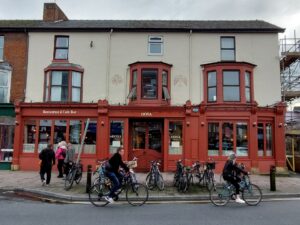Abena Poku-Awuah
Oxford City Council is encouraging residents to have their say on what the Council will do the improve air quality in the city from 2021-2025. Here is our response to the consultation.
The Coalition for Healthy Streets and Active Travel welcomes this draft document and is completely supportive of the target of nitrogen dioxide emissions being reduced to 30µg/m3 by 2025. We sincerely hope that the City Council can bring down NO2 levels to the present legal limits this year and then continue on to work towards this challenging target.
Many of the measures that have been identified are important, particularly those that build on existing proposals such as the ZEZ and Connecting Oxford. We urge the City Council to make rapid progress with these two plans, despite the hiatus created by Covid 19. As the consultation states, ‘In this AQAP we outline plans to effectively tackle air quality issues that are within our control.’ (p5)
We are delighted that there is to be an annual review and we encourage the City Council to ensure that this is well-resourced and informative.
We hope that the City Council will be able to work with the County Council so that it has the same target, as pollution can blow into the City from surrounding areas.
None of the key performance indicators have been defined clearly and no baseline numbers are provided, in order to measure progress. It is concerning, therefore, that there is no accurate information on how the KPI is to be measured, especially as the baseline should already be known and should be declared. This is especially true as 10/30 key priority areas are already being delivered or delivery is in progress.
In some cases, the KPI could be linked more clearly to the proposed measure. For instance, the aim is to have more local heat networks (measure 23, p36), but the KPI is ‘the number of planning applications using heat networks’. This feels both too passive (the City Council should be stimulating the development of heat networks) and only focused on new build developments, not the majority of the housing stock that already exists.
We look forward to seeing specific details of how the KPIs identified in Table 5 are to be measured, when the final AQAP is published.
The failure of particulate levels to drop during lockdown is surprising, especially as this was during the summer, when heating systems and stoves are not in use. Further research is needed to establish the extent to which the particulates really are associated with domestic heating / woodstoves, agriculture (ammonia) or other sources external to the City.





